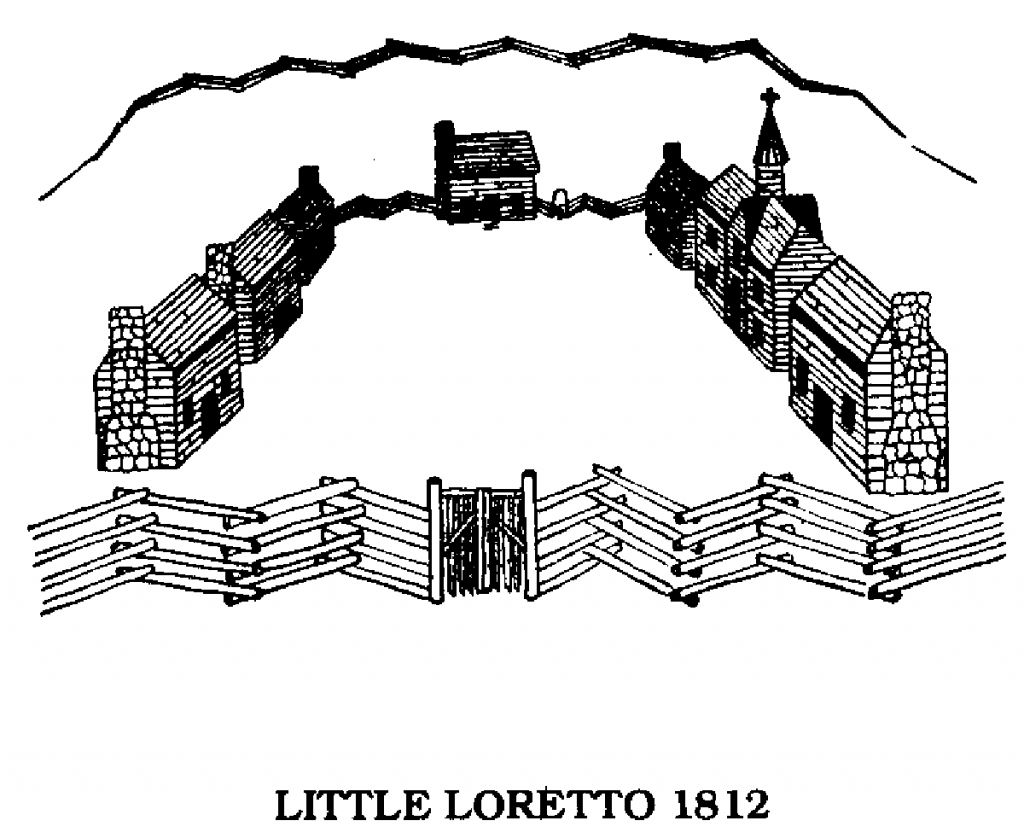Little Loretto as Landscape Spirituality
Posted on November 1, 2018, by Joy Jensen SL

Little Loretto occupies a sacred place in Loretto’s history and memory. The landscape of Little Loretto evokes what is precious in Loretto spirituality. Little Loretto is an example of landscape spirituality in the American experience. In writing about landscape spirituality Belden Lane claims that “to experience a place as sacred is to participate, knowingly or unknowingly, in a whole history of cultural tensions and conflicting claims, even ecological shifts in the terrain itself.”
The Little Society of the Friends of Mary under the Cross of Jesus, as Father Charles Nerinckx termed them, was founded April 25, 1812, and was the first congregation of women religious founded in the United States. Little Loretto qualifies as a sacred landscape because an ordinary place in America became extraordinary due to the spirituality that was practiced there. Lane offers four axioms, or rules, to identify sacred spaces.
First, the ordinary would be constructed as a place for the holy. The first sisters moved to an ordinary place in the neighborhood of St. Charles Church. Their calling was experienced as meaningful in a place that was identified not only with hardship but also with a joyful life and abandonment to God. The sisters never quailed in the face of the future, experiencing as they did cold and hunger. They inscribed on their hearts the motto from Father Nerinckx: “Never forsake Providence and Providence will never forsake you.”
Second, sacred space is ordinary space ritually made extraordinary. Little Loretto was built on ordinary terrain, but the call to abandonment to God made it into a sacred landscape. Because of reverence for God, who was to dwell there, the logs intended for the walls of the church were squared. Since the church was not completed immediately, the weather-boarded area between the proposed church and convent was used as an oratory. An altar was set up along with a statue of the Blessed Virgin. Mass was offered as often as possible, and the sisters and scholars prayed their daily devotions there. During the years before the move to St. Stephen’s Farm many rituals were performed in this sacred space.
Third, openness to the particular place of God is an openness to the God of all places. Openness was part of Little Loretto. The sisters did not know what would happen to them when Father Nerinckx left them for Missouri in 1824. When the priest departed, he left the sisters with parting words about openness to God: “If you inquire whether I know what will become of you, this I cannot tell you … you will undergo great changes from your present state. …”
Fourth, sacred space is at once a tendency alternately toward localization and universalization. There is in spirituality a pull between the local and the universal. The Society had a thriving school at Little Loretto, their “monastery,” but as their numbers increased they opened other schools, moving from the local to the universal. Between the years 1815 and 1817 the Society numbers increased to 10. A branch house was opened at Holy Mary, named Calvary, in 1816. A second branch house was opened on Pottinger’s Creek in 1818. Gethsemani was opened in 1818. The sisters were called to move from their local space to the universal — to the West, to China, to Latin America and now to Pakistan.
Lane wrote that “in the history of Christian faith, landscape and spirituality are often intertwined.” From this brief description of Little Loretto we can understand in some degree how Little Loretto exemplifies landscape spirituality in the American faith experience. We can say that place creates people, but we also can say that people create place. Little Loretto created the Society, but the landscape also created the Society.
Sources: Belden Lane, Landscapes of the Sacred: Geography and Narrative in American Spirituality; Anna C. Minogue, Loretto: Annals of the Century.
